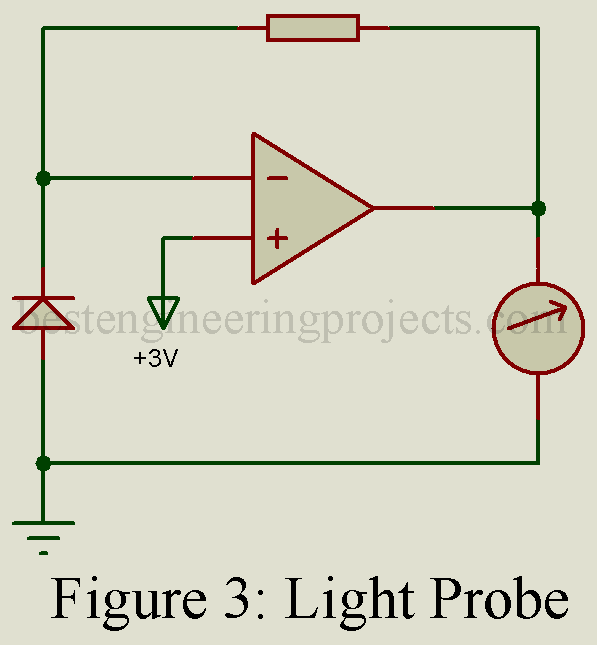Today optical fiber is the infrastructure of many communication hubs. Fiber carries billions of telephone calls a day. Optical fiber makes up the backbone structure of many local area networks currently in use. In this section, we will look at planning an optical fiber installation and maintaining it once it is in place.
Remember, the diode lasers (DLs) can emit radiation with a far higher energy density than sunlight, and even though you can’t see the radiation, it can easily cause blindness by retinal heating. You should always wear eye protection when working on laser systems. A 1-W or more CW output laser, such as used in medical imaging products, can produce a stunningly high-power density when focused. Even when poorly focused, 1 W across the 0.125-in diameter (like the pupil of your eye) means more than 100 times the power density of sunlight! You need to respect the device and follow the rules for working with it. After completing this section you should be able to
- Draw a fiber link showing all components
- Explain the use of the radiometer
- Describe rise time measurement
- Troubleshoot fiber-optic data links
Losses in an Optical-Fiber System | Optical Fiber Troubleshooting
The optical-fiber system in Fig. 1 has an emitter, two connectors, the fiber, and the detector. The proper performance of this fiber link depends on the total power losses of the light signal through the link being less than the specified maximum allowable loss. Power is lost in all of the components that make up the system. For example, a connector may have a power loss of 1.5 dB and a splice with 0.5 dB, and the fiber cable itself will also attenuate the light signal. As an example, if a fiber system’s maximum allowable losses were 20 dB, and total power losses added up to 17 dB, the system would still have a 3-dB working margin. Of course, this is a small working margin and does not take into account weakening emitters and detectors over a period of time.
Calculating Power Requirements | Optical Fiber Troubleshooting
A power budget should be prepared when installing a fiber-based system. The power budget will specify the maximum losses that can be tolerated in the fiber system. This will help ensure that losses stay within the budgeted power allocation. The launch power is figured first. Launch power is calculated by subtracting the emitter’s connector loss from the power being injected into the fiber by the emitter. For example, suppose the emitter produces 150 mW of power or 20 dB. Then subtract the connector loss of 1.5 dB. Thus, the effective launch power is 18.5 dB. Next, determine the detector’s minimum power requirement. Suppose the detector gave us another 10-dB gain. Then the system’s maximum losses could not exceed 28.5 dB. Adding up the system losses to include connectors, splices, and fiber cable, the total could not be more than 28.5 dB.
Once the optical fiber system is in place, the radiometer would be used to determine the actual power being lost in the system. A calibrated light source injects a known amount of light into the fiber, and the radiometer connected to the other end of the fiber measures the light power reaching it. Periodic checks should be scheduled as preventive maintenance to keep the fiber system in peak performance. Weakening emitters should be replaced before they degrade the system’s performance.
Check out other electronics troubleshooting article posted on bestengineeringprojects.com
- Telemetry System Troubleshooting
- Troubleshooting a LAN
- Troubleshooting of Transmission Lines
- Troubleshooting of TV and FM Radio System
- Troubleshooting of FM transmitter
Rise Time Measurement | Optical Fiber Troubleshooting
An optical fiber’s link performance can be determined by measuring the rise time of injected test pulses. Figure 2 shows the test configuration used to inject pulses into the fiber link. The test pulses must have a very fast rise time, typically in pico- or nanoseconds. At the detector end, connect a fast response oscilloscope to the output of the detector and measure the rise time of the injected pulses. Rise time is measured from the 10% point to the 90% point on the positive-going edge of the pulse, as illustrated in Fig. 2.
The rise time (Rt) measurement must not be greater than the value provided by the following equation:
A 70-ns optical-fiber system will have a bandwidth of 5 MHz based on this equation.
For this system to function properly the measured rise time would have to be less than 70 ns if a 5-MHz bandwidth is needed. Suppose the 5-MHz bandwidth system has the following signal delays: The emitter has a rise time of 1 ns, the detector a rise time of 20 ns, and a delay of 35 ns exists for 1 km of fiber cable. This adds up to a total system delay of 56 ns. This is a functioning system because the 56-ns delay is less than 70 ns. Scheduling periodic checks to keep an eye on the system rise time ensures that the specified system bandwidth is maintained. Weakening emitters and detectors and tight bends in the fiber cable will cause an increase in delay time, and the rise time measurement will be greater. This is an excellent means for monitoring a fiber system’s performance.
Connector and Cable Problems | Optical Fiber Troubleshooting
Some of the problems associated with fiber-optic links are caused by contact with a foreign substance with the fiber (even the oil from your skin can cause serious trouble). Connectors and splices are potential trouble spots. A back-biased photodiode and an op-amp can be used as a relative signal strength indicator. Looking for the signal while gently flexing cables and connectors can help pinpoint problem areas.
Characteristics of LEDs and DLs | Optical Fiber Troubleshooting
These special-purpose diodes are nonetheless diodes and should exhibit the familiar exponential I versus V curve. These diodes do not draw current when forward biased until the voltage reaches about 1.4 V. Some ohmmeters do not put out sufficient voltage to turn a LED on: you may have to use a power supply, a current limiting resistor, and a voltmeter to test the diode.
Reverse voltage ratings are very low compared to ordinary silicon rectifier diodes— as little as 6 V. More voltage may destroy the diode.
A Simple Test Tool | Optical Fiber Troubleshooting
Some systems use visible wavelengths; most use invisible infrared. Another diode of the same type or of similar emission wavelength can be used as a detector to check for output. Use a meter in current mode, not voltage, and compare a good system to the troublesome one.
To increase sensitivity, a simple current-to-voltage converter circuit, made with an op-amp, a feedback resistor, and the detector diode pumping current to the op-amp input, will convert the current from the detector diode to a voltage out of the op-amp. The circuit for this is shown in Fig. 3. If signal levels are high, just a resistor across the detector diode is appropriate. Remember to keep the bias voltage small enough so that the voltage developed is well below the maximum reverse voltage allowed for the diode.
If you wish to see the signal modulation, try using an oscilloscope in place of a simple multimeter. A less quantitative check for emitted output can be made using a test card of the type used in TV-repair shops to check for output from infrared remote controls. These cards are coated with a special chemical that in the simultaneous presence of visible and infrared illumination will emit an orange glow.


